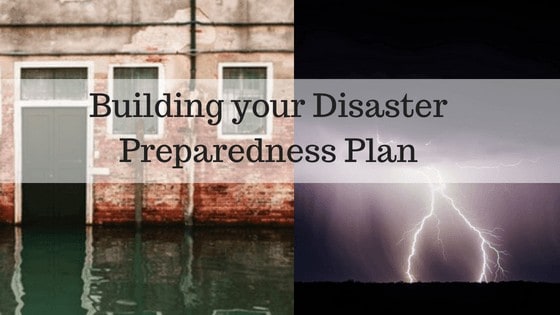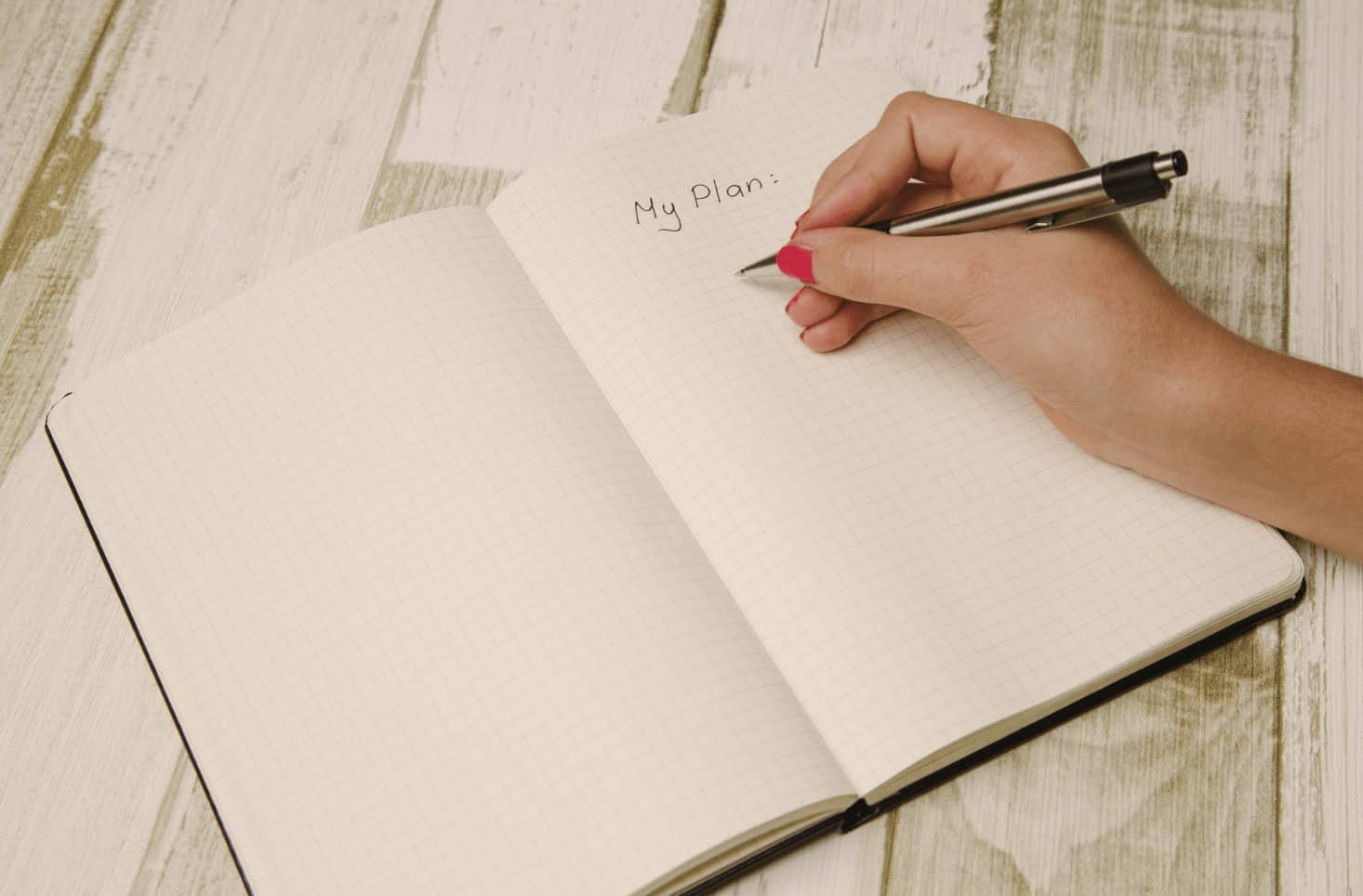 Creating a disaster preparedness plan is a crucial part of surviving a disaster with minimal discomfort, risk, and danger. Understanding what you need in your plan, how to keep it updated, and gathering the right supplies can often help save lives. Numerous large organizations provide online resources for creating a disaster preparedness plan. Having one of these plans can potentially save your life. During natural and other disasters, there is often a limited amount of notice. Thus, citizens need to be prepared to have their basic needs of food, water, and shelter met to ensure their survival.
Creating a disaster preparedness plan is a crucial part of surviving a disaster with minimal discomfort, risk, and danger. Understanding what you need in your plan, how to keep it updated, and gathering the right supplies can often help save lives. Numerous large organizations provide online resources for creating a disaster preparedness plan. Having one of these plans can potentially save your life. During natural and other disasters, there is often a limited amount of notice. Thus, citizens need to be prepared to have their basic needs of food, water, and shelter met to ensure their survival.
What Is A Disaster Preparedness Plan?
A disaster preparedness plan is a plan that includes supplies, responsibilities, and otherwise mapped out methods for surviving a disaster with your family or household. This plan may look different for each home depending on your specific needs and situation. But it is essential to have one in place should a disaster strike.
When disasters happen, there isn’t always notice that will allow you to make and execute a plan in time. Therefore, it’s especially important to have your plans set in advance and to gather the needed materials and supplies. Once word of an impending disaster spreads, it may be difficult to get things like water, food, and medical supplies as others scramble to prepare.
Important Parts of The Plan
Sitting down with your household and figuring out a plan is the best way you can prepare for a disaster. A disaster preparedness plan will look different for each family but should contain some common components.
Likely Emergencies
Knowing what emergencies you may need to prepare for is the first step in creating your disaster preparedness plan. Consider all of the potential emergencies and disasters that your family or household may encounter, and plan out what you would need in that situation. Keep in mind potential weather conditions, what alerts, and warnings you can expect. Whether or not you’ll need to evacuate, and how you will communicate should cellphones not be an option. These small details could make a difference when disaster strikes. Discussing these items in advance can make surviving the disaster much easier.
Responsibilities
Talk about what each member of the household will do before, during, and after a disaster. Discuss in detail which parts of the disaster preparedness plan you will each be responsible for. In that case, how you will communicate when you have completed your part. Consider the different ages of people in your household, and which members may require additional assistance. Decide who will be responsible for pets, young children, or elderly members of your family. Eventually, how you will confirm that everyone is accounted for.
Supplies
When creating your disaster preparedness plan, it is also crucial to consider what supplies are needed and how much of those supplies will be needed. Medications, dietary needs, and other prescriptions and equipment should all be considerations. For those that have mobility issues, you may want to consider including other supplies that will help them stay mobile. Also, consider extra water and food for those who need to take regular medications. Food and water are obvious concerns, and you’ll want to be sure that you have enough of a fresh supply. Don’t wait until the disaster is announced to go out and buy water or food though. Try to have sustainable supplies of these necessities on hand in quantities sufficient for your situation.
Practice
Once your disaster preparedness plan is in place, you’ll want to practice to ensure that the plan will run smoothly.
Practice is especially important if you have young children or elderly individuals. Where a test run may reveal potential problems that need to be ironed out in the plan.
By practicing your plan you’ll also give your family the chance to see what it will be like to prepare for a disaster. This may help them stay calmer when the real situation arrives. Be sure to communicate often during your practice sessions as you would during a real disaster.
Other Things to Consider
When making your disaster preparedness plan. It is important to remember that you are not the only household suffering from this disaster. While some minor emergencies will be reasonably straightforward. More severe disasters may test the limits of your plan and your family.
You’re Not Alone
When making your disaster preparedness plan remember that you are one of many individuals that will likely be suffering and there are a few things you can do to prepare for this. It is generally recommended to shelter in place when possible unless your home is threatened by water, weather, or another natural force that makes it unsafe to do so.
It is also recommended to lock down your household, and many individuals also feel the need to board up their windows and otherwise fortify their homes. This is because others who are less prepared may get desperate in disaster situations and attempt to harm others or force their way into shelters.
While this can be scary for those involved, keep in mind that securing your property also prevents damage. It is also a good idea to stock up on a few extra supplies should you need to shelter a few stranded neighbors.
Restock supplies
Have a set schedule for restocking your supplies, and stick to it. Spoiled food, leaky water vessels, and expired medications are all things that can cause issues in a disaster and getting replacements can be challenging.
Medications, in particular, may be hard to come by, and spoiled food can make sticking out a disaster harder than it needs to be. Part of your disaster preparedness plan should include restocking supplies and finding supplies with long shelf lives that are also useful in a disaster.
Helpful Tips
Creating your first disaster preparedness plan can be intimidating. However, figuring out individual pieces can help you put together a more effective overall plan. Consider starting small with these recommendations.
How Much to Prepare
Example disaster preparedness plans are available online. And several organizations such as the American Red Cross, and Ready.gov have ample resources to help you get started. A disaster preparedness plan will be unique for each family; however, the basic outline can look similar to many others.
When making preparations keep in mind that you don’t know exactly what the future holds. Focus on the basics of food, water, shelter, and medical needs to get what you need without saddling yourself with extra weight.
Figure out in advance how you’ll evacuate and what you’ll need to take with you. It’s not uncommon for specific disasters to force people out of their homes. And you should have a plan for being mobile in addition to sheltering in place.
When to Prepare
Preparing in advance will save you a lot of stress and worry when a disaster arrives. A disaster preparedness plan can never be created too early or updated too often. When the needs of your household change.
If you have added a new family member to your household or subtracted one, then be sure to make the needed adjustments to your disaster preparedness plan. Although the addition of one person can seem minimal when you are considering supplies and medicine, it can still make a significant impact.
Restocking Your Supplies
You may schedule a restocking your supplies activity in addition to updating your plan on a regular basis. Consider setting a schedule for restocking specific food and medical items. And how to store those items for a longer shelf life.
Canned goods, for example, may have a long shelf life. But they are also bulky and may not provide enough nutritional value. Other foods such as meal replacement bars may have a shelf life of 2 years or more and are lighter.
Preparing different food, water, and medical supplies as you are able to. Will ensure that you have what you need when a disaster strikes. It can also ensure that you have the supplies on hand that work best for your family. When your standard supplies are impractical or unavailable.
When to Update the Plan

Updating your disaster preparedness plan can either be done on a schedule or when changes occur in your household. The general recommendation is to review your entire plan. And have the whole family do a practice run at least once per year.
Updating your plan includes an adjustment to how you will evacuate or changes to the location of local shelters. You’ll also want to note changes to where you might get more supplies, such as food, water, medicine, and gas.
Things to Remember in updating your Plans
You should also update the plan to note any new pets and the ages of your children. You should also include the languages spoken in the household.
Additionally, you’ll also want to make a note of locations that your family frequently visits. In case one of your family members becomes lost, and you need to provide this information to rescue staff.
If any of your household members use specific medical devices or equipment. Then you’ll also want to explicitly make a note of the make and model in case a new unit is needed. Certain shelters come equipped with medical equipment, but there likely won’t be much variety.
Becky is a wildlife enthusiast and pet and livestock care expert with a diploma in canine nutrition. With over a decade of experience in animal welfare, Becky lends her expertise to Simple Family Preparedness through insightful info about pets, livestock, bee keeping, and the practicalities of homesteading.
Last update on 2024-04-25 at 01:05 / Affiliate links / Images from Amazon Product Advertising API



the ideas you have put together are very useful and comprehensive; thank you for sharing them with others
Paul